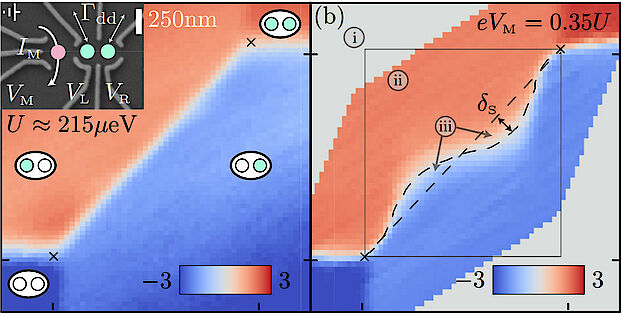Published in Physical Review Research: Measurement-induced population switching

The act of measurement in quantum mechanics imparts backaction and fundamentally impacts the measured object. In this work, we show how increasing the bias on the charge sensor (pink) changes the charge stability diagram of the double dot (cyan), switching the (0,1) and (1,0) charge states away from the usual diagonal straight line (left panel) towards the increasingly S-shaped curve (right panel) with higher bias on the sensor (here 75 microV). This is observed when interdot tunneling is fully suppressed (no interdot tunneling), making the (1,0) and (0,1) states metastable and the time-dependent charge state alternating (through reservoir exchange) easily measureabe in the boxed region (right panel), as previously published in Biesinger, Scheller, PRL115, 106804 (2015), see pdf.
Here, the population switching is due to the asymmetric coupling of the charge sensor (pink), coupling more strongly to the left dot (in closer proximity) than to the right dot (further away from sensor), thus also leading to the population switching.
Collaboration with theory work by Oded Zilberberg and group (ETHZ, now Konstanz) and Bernd Braunecker (St. Andrews) and experiment by our Basel team.
Ferguson*, Camenzind*, Scheller et. al., Phys. Rev. Research 5, 023028 (Apr 14, 2023), manuscript pdf
